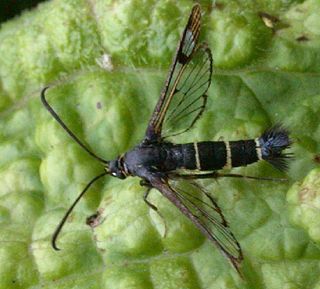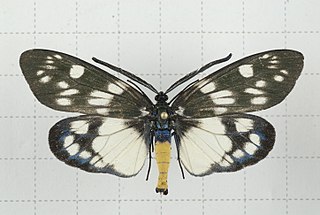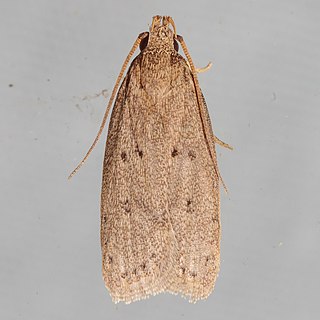
The Sesiidae or clearwing moths are a diurnal moth family in the order Lepidoptera known for their Batesian mimicry in both appearance and behaviour of various Hymenoptera.

Bunzō Hayata was a Japanese botanist noted for his taxonomic work in Japan and Formosa, present day Taiwan.

The poplar admiral is a butterfly in the Limenitidine clade of the family Nymphalidae.

Shōnen Matsumura was a Japanese entomologist.

Diacrisia sannio, the clouded buff, is a moth of the family Erebidae. The species was first described by Carl Linnaeus in his 1758 10th edition of Systema Naturae. It is found in the Palearctic realm from Ireland to Siberia. It is not found in North Africa. In the Russian Far East, eastern China, Korea, and Japan it is replaced by Diacrisia irene.

Nannoarctia is a genus of moths in the family Erebidae. The genus was erected by Nobutoyo Kôda in 1988.
Jinhaku Sonan in Chinese Chu-Nan Yan Bo was a Japanese entomologist.

Euphyia unangulata, the sharp-angled carpet, is a moth of the family Geometridae. It shares its common name with the similarly coloured Neoarctic, Euphyia intermediata.
Choreutis achyrodes is a moth of the family Choreutidae. It is known from China, Japan, India (Assam) and the Oriental region.

Agonopterix is a moth genus of the superfamily Gelechioidea. It is placed in the family Depressariidae, which was often – particularly in older treatments – considered a subfamily of the Oecophoridae or included in the Elachistidae.

Eterusia aedea, the red slug caterpillar, is a species of moth in the family Zygaenidae. It was described by Carl Linnaeus in his 1763 Centuria Insectorum. It is found in Sri Lanka, India, Nepal, Taiwan, Japan and China.
Nannoarctia integra, described by Francis Walker in 1855, is an endemic species of moth in the family Erebidae from the Philippines. The species is often confused with N. takanoi from Taiwan.

Tethea consimilis is a species of moth of the family Drepanidae first described by Warren in 1912. It is found in Asia, including the Russian Far East, Japan, Korea, Taiwan, Myanmar, Indonesia and India. The habitat consists of various types of mixed and broad-leaved forests.

Boloria selenis is a species of butterfly in the family Nymphalidae. It is found from the Volga basin to Japan.

Scaptesyle bicolor is a moth in the subfamily Arctiinae. It was described by Francis Walker in 1864. It is found in Sri Lanka, Assam in India and Taiwan.

Susica sinensis, the statuesque cup moth, is a moth of the family Limacodidae. It is found in China, Taiwan, Laos, Thailand and Vietnam.

Tethea octogesima is a moth in the family Drepanidae first described by Arthur Gardiner Butler in 1878. It is found in Japan, Korea, China, Taiwan and the Russian Far East.

Autosticha kyotensis, the Kyoto moth, is a moth in the family Autostichidae. It was described by Shōnen Matsumura in 1931. It is found in Japan on the island of Honshu. It is an introduced species in the United States, where it has been recorded from Alabama, Florida, Louisiana, Mississippi, North Carolina, Tennessee and Texas.
Artaxa angulata is a moth of the family Erebidae first described by Shōnen Matsumura in 1927. It is found in Taiwan, Myanmar, India, Pakistan, Sri Lanka, Malaysia, Singapore and Indonesia.













